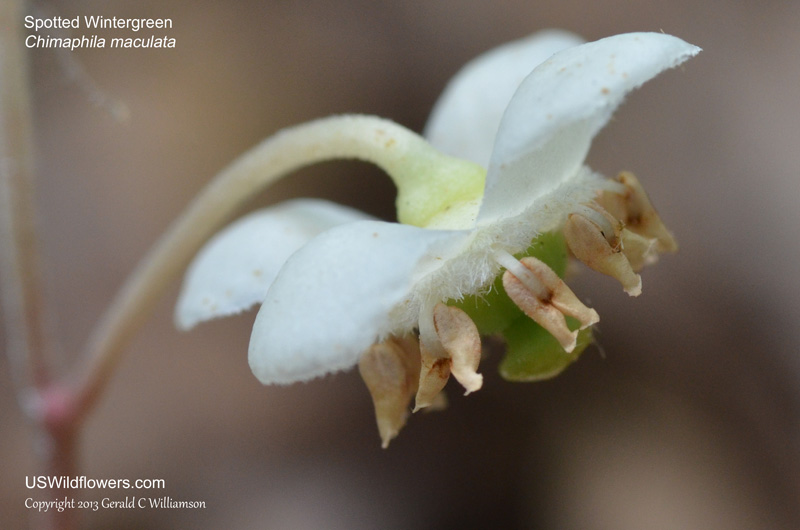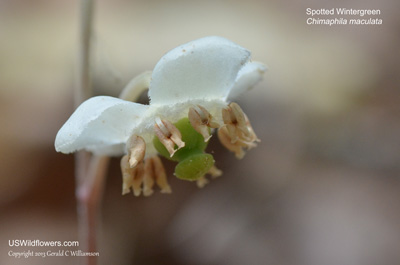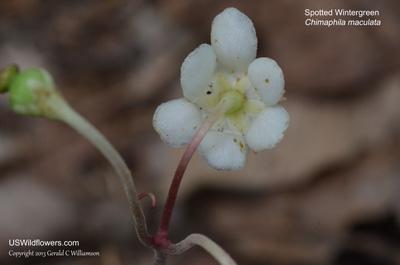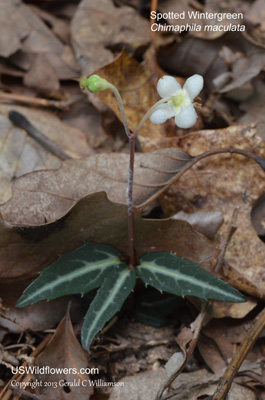Wildflowers of the United States | |||||||||||||
| |||||||||||||
Chimaphila maculata - Spotted Wintergreen, Pipsissewa, Striped Wintergreen, Striped Prince's Pine, Striped Prince's Plume, Dragon's Tongue. While Spotted Wintergreen or Striped Wintergreen are frequently-used common names for Chimaphila maculata, the Wintergreen name is perhaps more properly associated with the Gautheria genus. The USDA and ITIS list it as Striped Prince's Pine, presumably to avoid confusion on genus membership. Pipsissewa is also frequently used for this plant, although that is more frequently associated with sister species Chimaphila umbellata, which does not have the stripe on the leaves and more frequently has generally reddish blossoms, and Pipsissewa is commonly applied to the Chimaphila genus in general. Three states (New York, Maine, Illinois) in which Chimaphila maculata, according to the USDA Plants Database, has protected status also list it as Spotted Wintergreen.
| Some authorities place Chimaphila in Pyrolaceae - the Shinleaf family rather than in Ericaceae - the Heath family. There are three species of Chimaphila found in the United States. Chimaphila menziesii - Little Prince's Pine - is found in several western states as well as British Columbia. Various subspecies of Chimaphila umbellata - Pipsissewa - are found across much of the United States and Canada. Chimaphila maculata - Spotted Wintergreen - is found in forests in every state east of the Mississippi and in Eastern Canada, and disjunctly is also found in the mountains of Arizona, Mexico, and Central America south to Panama. Found in: AL, AZ, CT, DC, DE, FL, GA, IL, IN, KY, MA, MD, ME, MI, MS, NC, NH, NJ, NY, OH, PA, RI, SC, TN, VA, VT, WV Leave comments on Chimaphila maculata at this link.   Map courtesy of The Biota of North America Program. Map color key Search Our Database: Enter any portion of the Scientific, Common Name, or both. Do a general Google search of the entire site: #ad
| #ad
| | ||||||||||
|
Commercial / Cookie Notice Looking for Wildflowers for a specific state? Check here: | |||||||||||||
|
All content except USDA Plants Database map Copyright Gerald C. Williamson 2025 | |||||||||||||
Code Update 20230302




